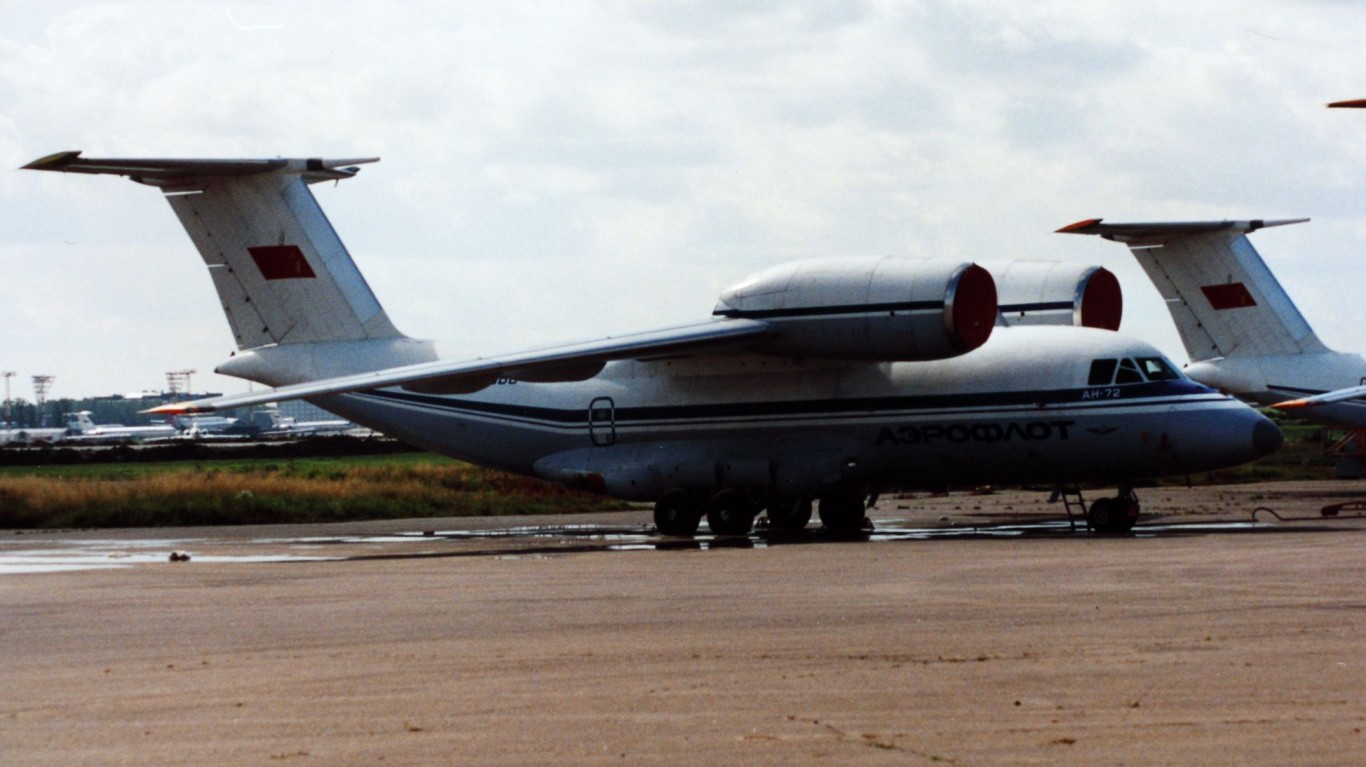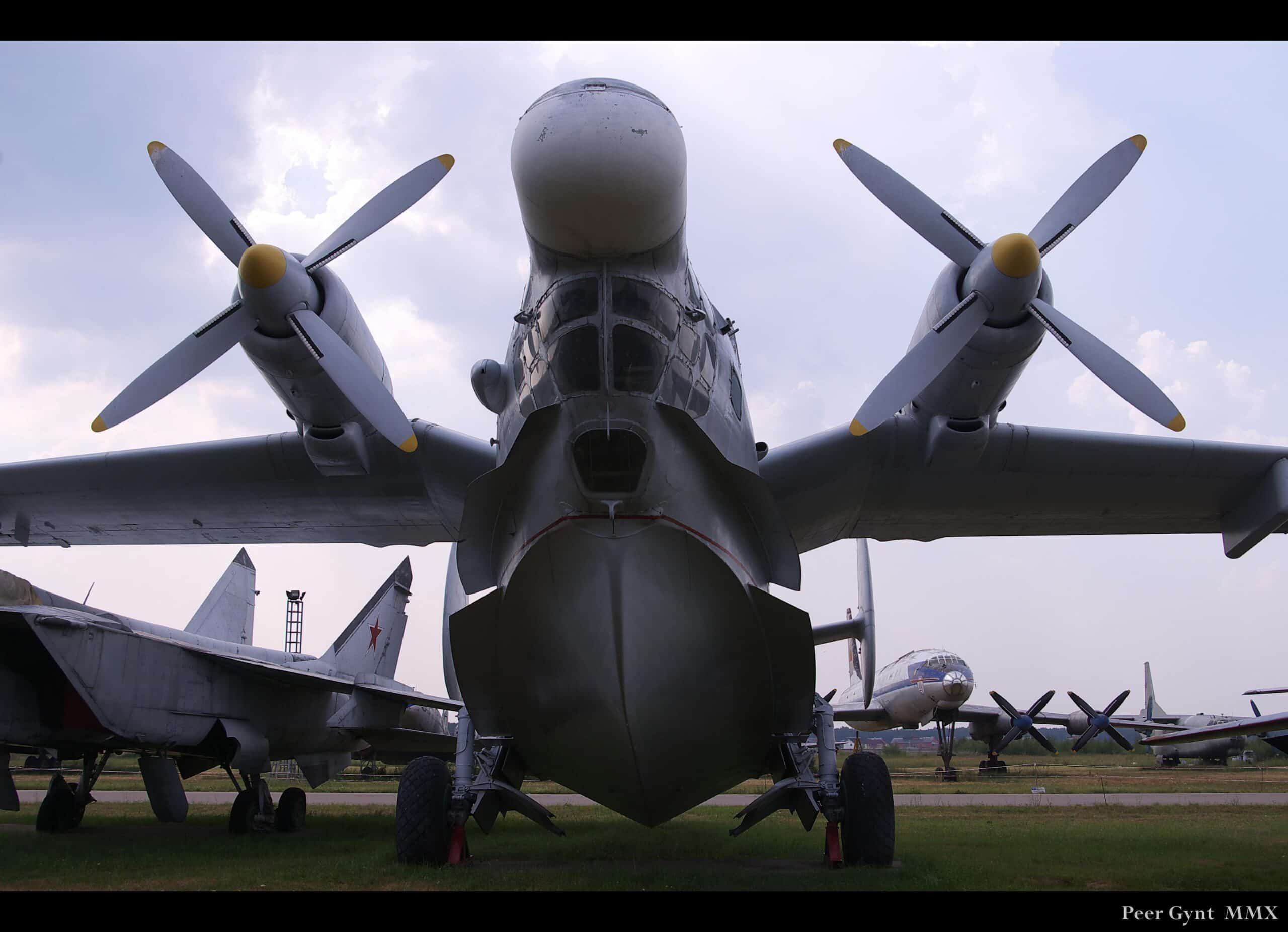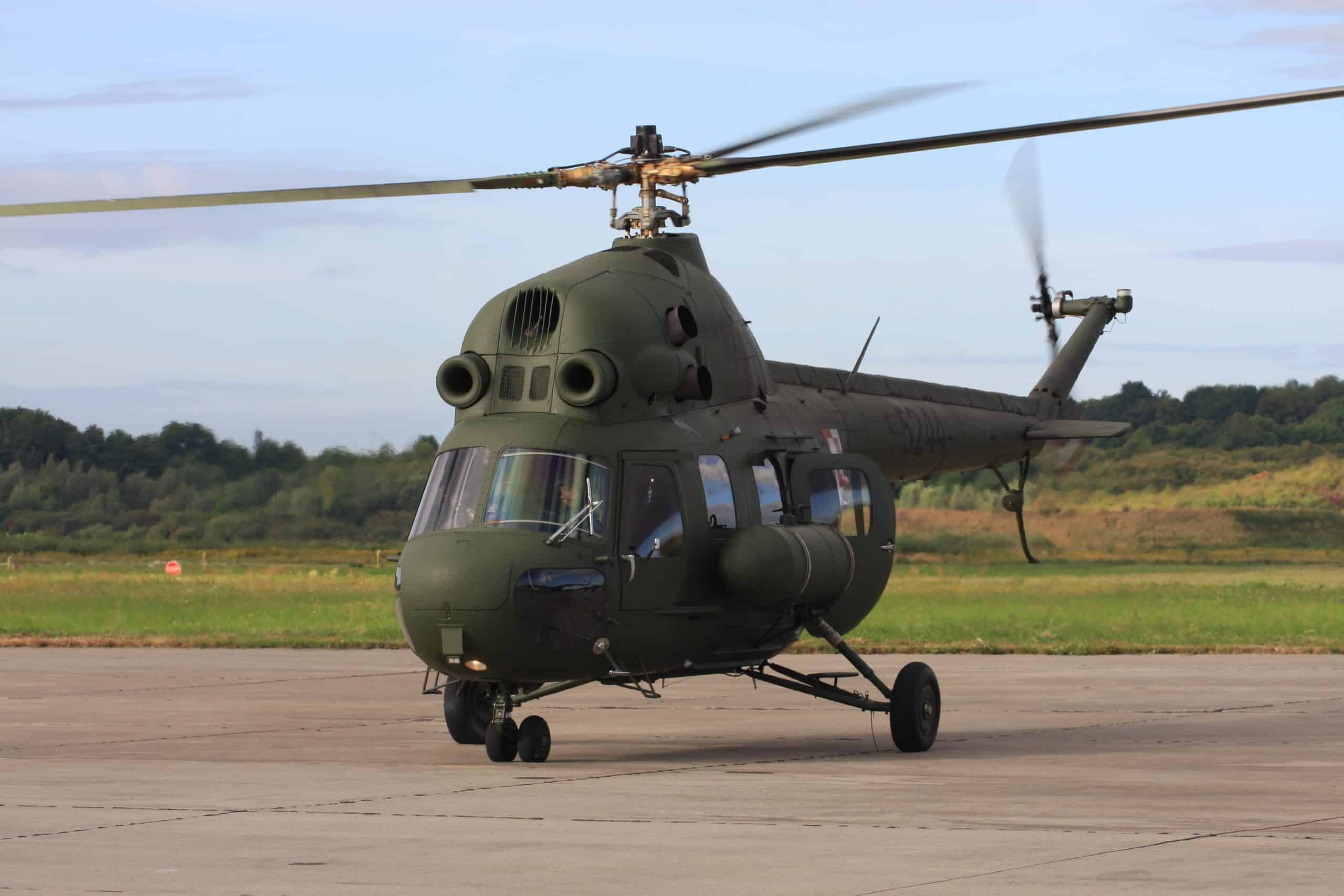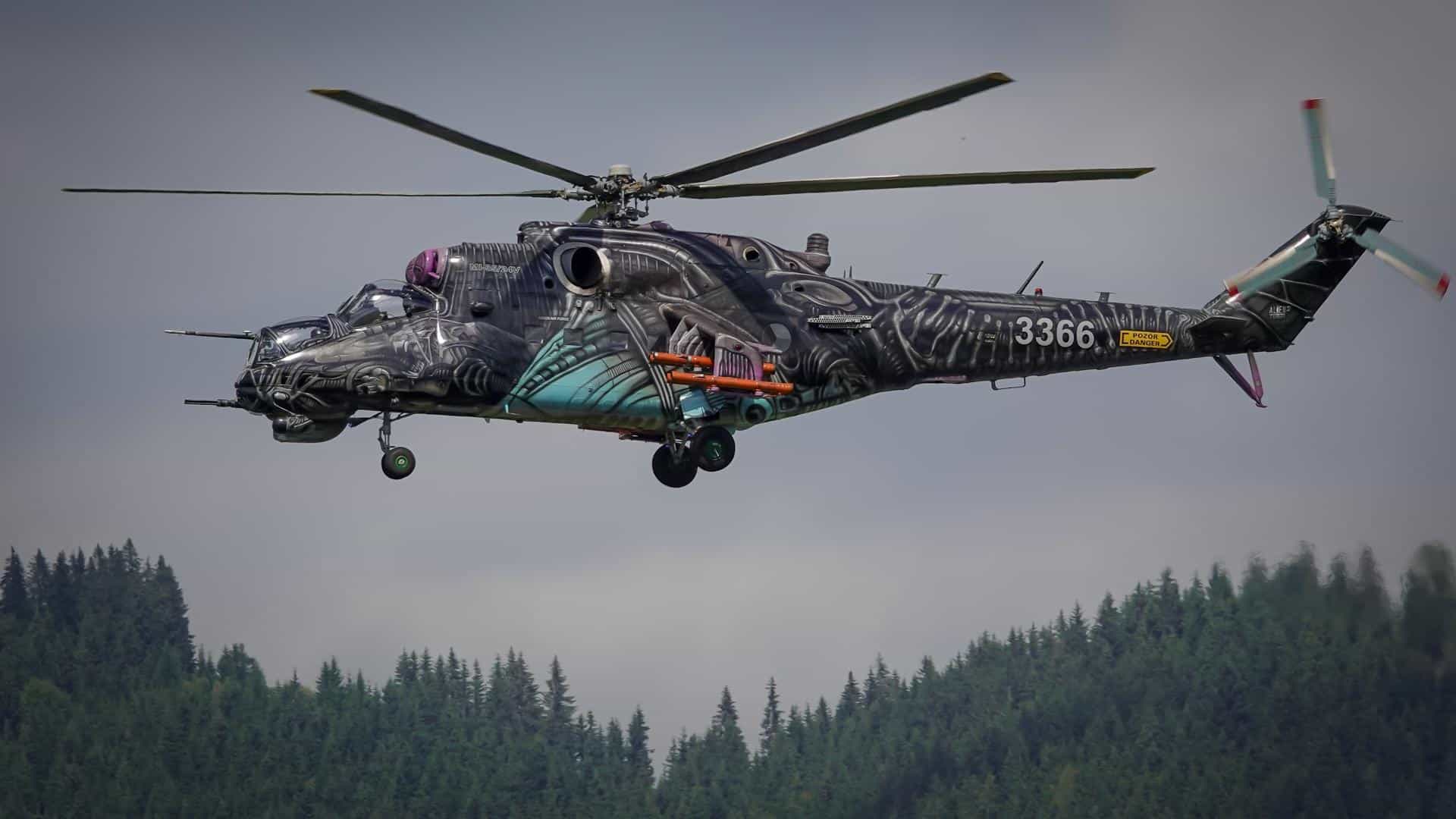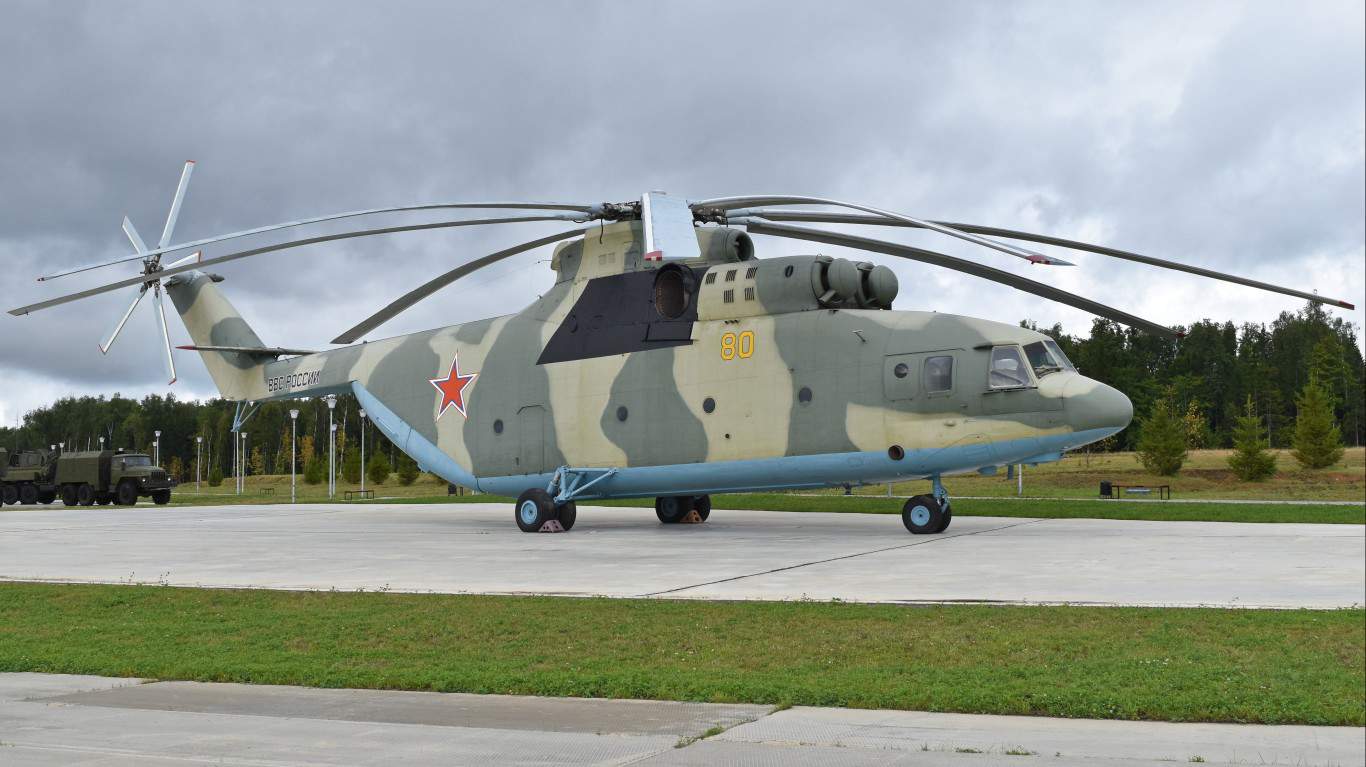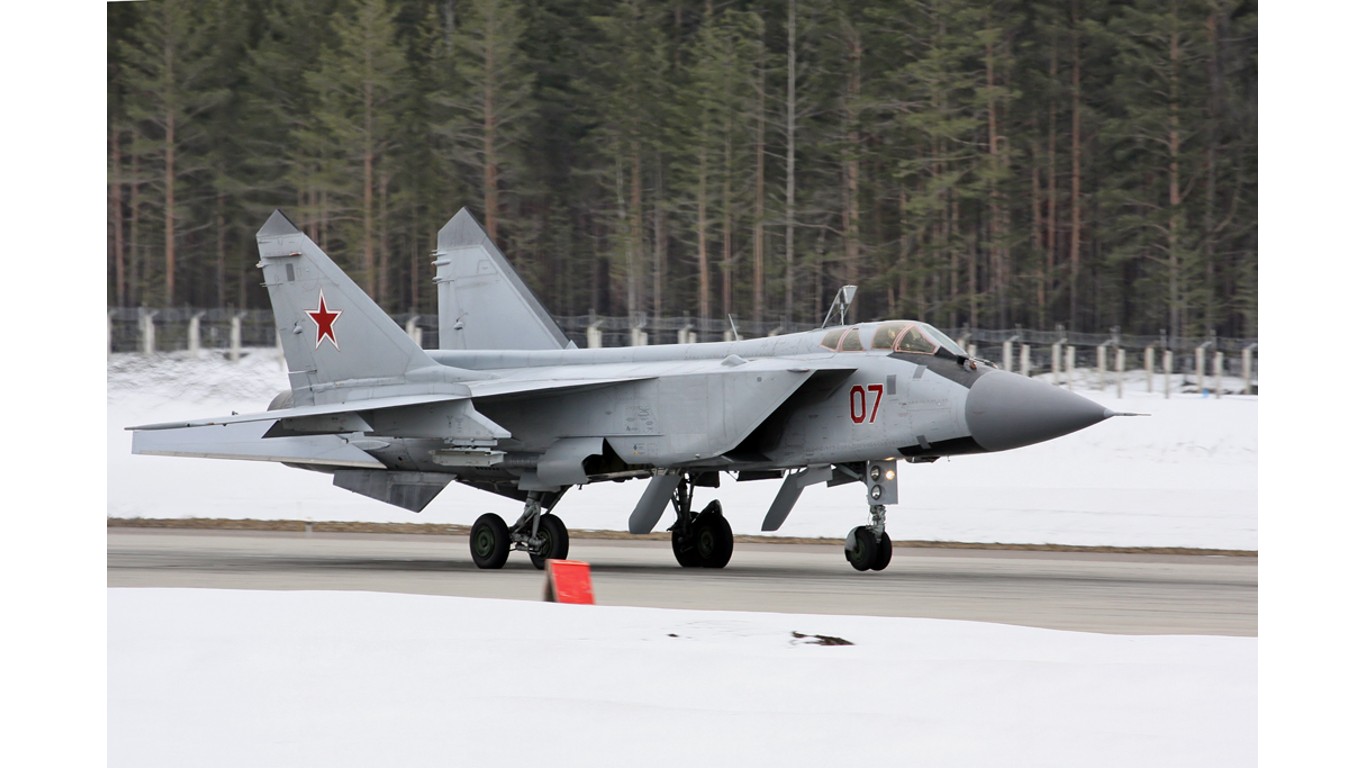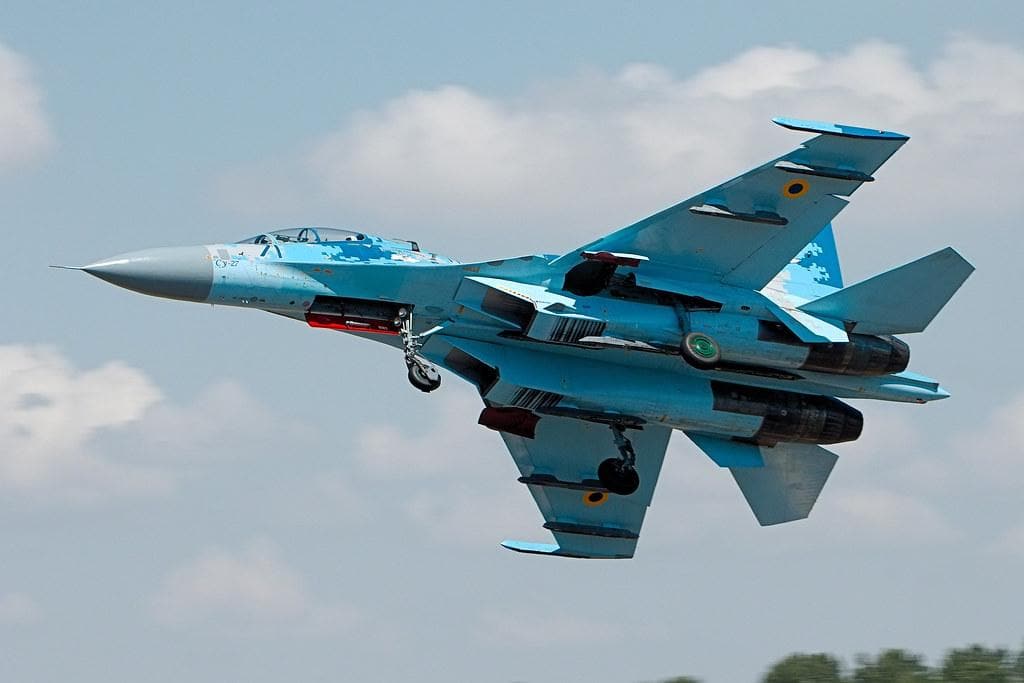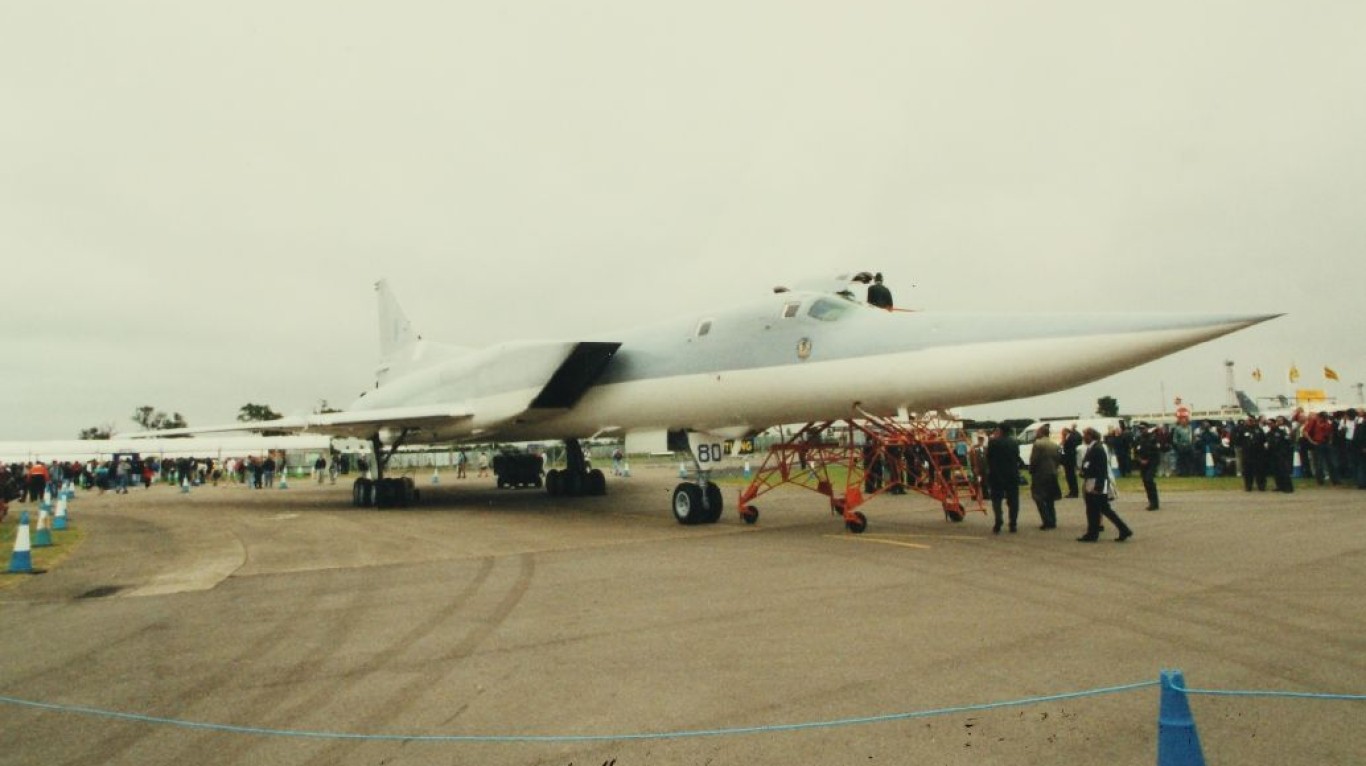
24/7 Wall St. Insights:
- Russia maintains one of the world’s largest and most formidable fleets of combat aircraft on the planet, and it is primarily made up of Sukhoi and Mikoyan jets
- One of the newest additions to the fleet is the Su-57 Felon, Russia’s fifth-generation fighter designed to compete with the American F-22 and F-35
- Outside of the Su-57, other Sukhoi fighter jets like the Su-27/30/35 variants do most of the heavy lifting for the Russian Air Force and can hit speeds over Mach 2
- Russia employs strategic bombers like the Tu-160 Blackjack and the Tu-95 Bear for long-range nuclear and conventional strikes
- Also: Discover “The Next NVIDIA”
Russia maintains one of the world’s largest and most formidable fleets of combat aircraft on the planet. These aircraft range from advanced fighter jets to long-range bombers to attack helicopters. The mainstays of this fleet are Sukhoi and Mikoyan jets, which play a variety of roles within the force. (These countries have the most Sukhoi fighter jets.)
One of the newest additions to the fleet is the Su-57 Felon, Russia’s fifth-generation fighter designed to compete with the American F-22 and F-35. With stealth capabilities, advanced avionics, and supersonic speeds, the Su-57 is on the bleeding-edge of aeronautical innovation. This jet is powered by two Saturn AL-41F1 afterburning turbofan engines that allow for a top speed of 1,616 mph (Mach 2).
Outside of the Su-57, other Sukhoi fighter jets like the Su-27/30/35 variants do most of the heavy lifting for the Russian Air Force. Typically, these variants are used for a range of missions, including air superiority and ground attack operations. These jets are multirole fighters that can hit speeds over Mach 2. (Russian Aircraft Dominate the world’s fighter jets in vertical climb capabilities.)
On the heavier side, Russia employs strategic bombers like the Tu-160 Blackjack and the Tu-95 Bear for long-range nuclear and conventional strikes. The Tu-22 Backfire is another long-range bomber that is normally used for tactical and strategic bombing missions.
In terms of ground attack missions, Russia relies on the Su-25 Frogfoot for these close-air support roles. At much higher altitudes, Russia depends on the Mig-31 Foxhound, a supersonic interceptor, for its air defense and long-range missile capabilities.
From cutting-edge fighter jets to attack helicopters, Russia’s combat aircraft are some of the most advanced in the world. All of these aircraft enable Russia to project power on the world stage, and 24/7 Wall St. is taking a closer look at what Russia has in its arsenal. (Ukraine vs. Russia, how their MiG fighter jets compare.)
To identify every combat aircraft in the Russian military, 24/7 Wall St. reviewed the 2024 World Air Forces report from FlightGlobal, an aviation and aerospace industry publication. We ordered these aircraft alphabetically. We also included supplemental data on the type of aircraft and top speed. We excluded trainer aircraft.
Here is a look at every Russian combat aircraft currently in service:
Why Are We Covering This?

Understanding the aircraft in Russia’s Air Force is important because they play a big part in the country’s defense and global influence. Each type of aircraft has a specific job, like controlling the skies, bombing long-range targets, or using advanced technology to disrupt enemy systems. Knowing which aircraft are in use gives context to Russian military strategies and military capabilities.
An-72 Coaler
- Type: Tactical medium-lift transport aircraft
- Year introduced: 1986
- Active aircraft: 35
- Top speed: 438 mph
- Armament: 23mm gun pods, UB-23M rocket launcher system, conventional drop bombs
The An-72 Coaler has a very unique engine placement, compared to any other Russian aircraft. The engines are above the wings to create extra lift, allowing it to take off from shorter runways. It has earned the nickname of “Cheburashka” in Russia, for the resemblance of its engines to the ears of a popular Soviet cartoon character.
AS355 Twin Squirrel
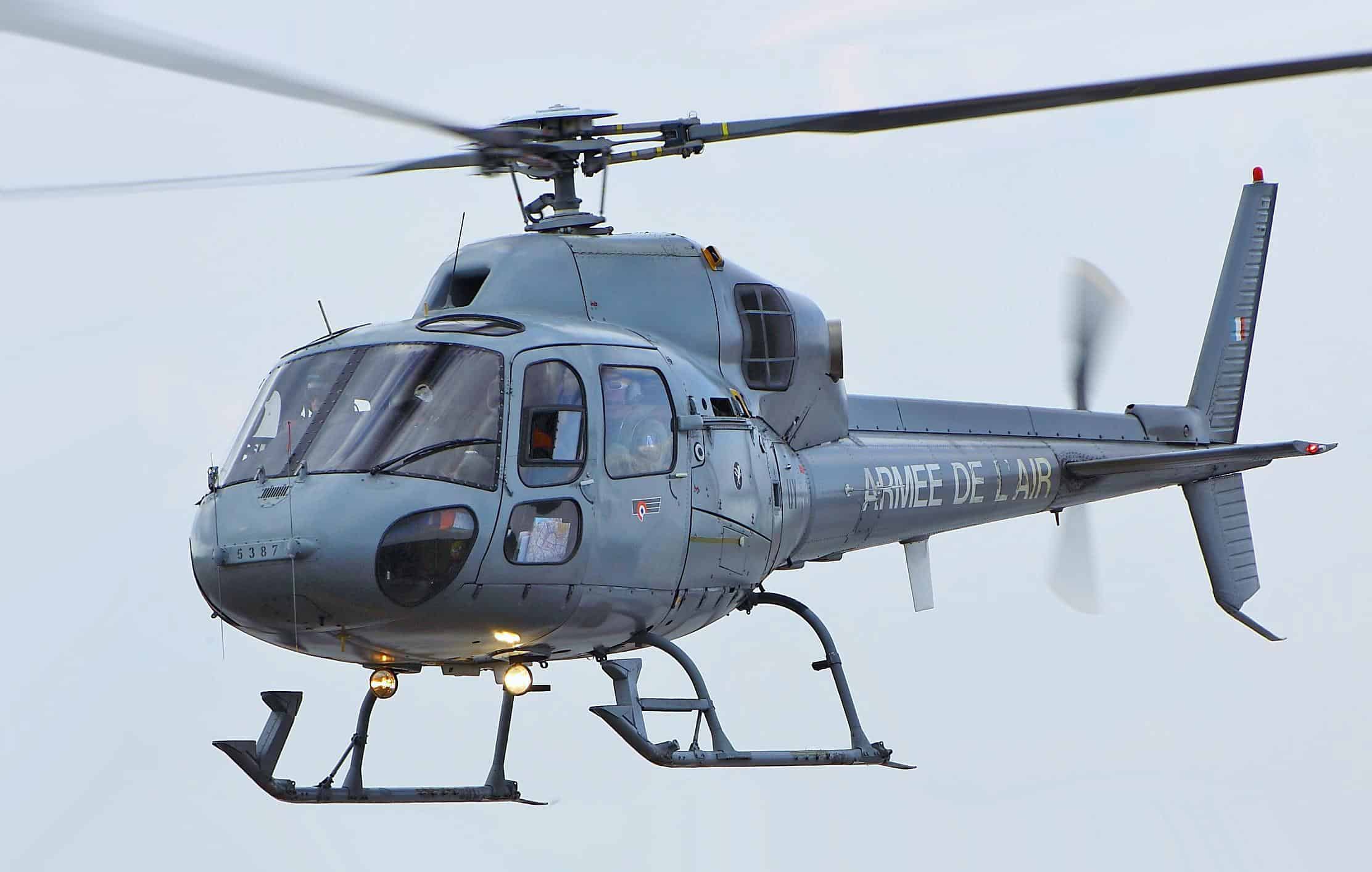
- Type: Light utility helicopter
- Year introduced: 1979
- Active aircraft: 2
- Top speed: 173 mph
- Armament: Light machine guns, rocket pods, air-to-ground, air-to-air missiles
With a top speed of 173 mph, the AS355 is used in a range of missions, including reconnaissance, transport, and even light combat roles. The Twin Squirrel was introduced in 1979, and there are currently 2 of these helicopters in active service. Despite its small size, it can be armed with light machine guns, rocket pods, and air-to-ground or air-to-air missiles. It does see some use among civilians as well, without the armament of course.
Be-12 Mail
- Type: Reconnaissance / maritime patrol aircraft
- Year introduced: 1961
- Active aircraft: 7
- Top speed: 329 mph
- Armament: Torpedoes, depth charges, mines, conventional drop bombs
The Be-12 was originally designed as an amphibious aircraft, allowing it to land on both runways and bodies of water. It was introduced in 1961 as a reconnaissance and maritime patrol aircraft, primarily for anti-submarine warfare. With a top speed of 329 mph, the Be-12 is typically used for long-duration missions over the ocean and it can equip a range of weapons reflecting this distinction.
Ka-226 Sergei (Hoodlum)

- Type: Light utility helicopter
- Year introduced: 2002
- Active aircraft: 36
- Top speed: 127 mph
- Armament: Light machine guns, rocket pods
Recognized by the NATO reporting name of Hoodlum, the Ka-226 Sergei was introduced in 2002 as a light utility helicopter. It has a fairly low top speed of 127 mph. The Ka-226 can be outfitted with various light machine guns and rocket pods. It also sees some civilian use.
Ka-27/28/29 Helix

- Type: Multi-role helicopter
- Year introduced: 1982
- Active aircraft: 108
- Top speed: 143 mph
- Armament: Rocket pods, gun pods, anti-tank missiles, aerial torpedos, depth charges
The Ka-27/28/29 Helix, introduced in 1982, is a multi-role helicopter series designed for anti-submarine warfare, search and rescue, and combat support. With a top speed of 143 mph, the Helix series is known for its versatility in naval and military operations.
Ka-31 Helix

- Type: Airborne early warning naval helicopter
- Year introduced: 1995
- Active aircraft: 3
- Top speed: 155 mph
- Armament: Light machine guns
Introduced in 1995, the Ka-31 Helix is an airborne early warning helicopter that provides long-range radar coverage for Russian naval forces. While its main role is reconnaissance, it can also be armed with light machine guns for self-defense. It can reach top speeds around 155 mph, and there are only 3 of these helicopters in active service.
Ka-52 Alligator
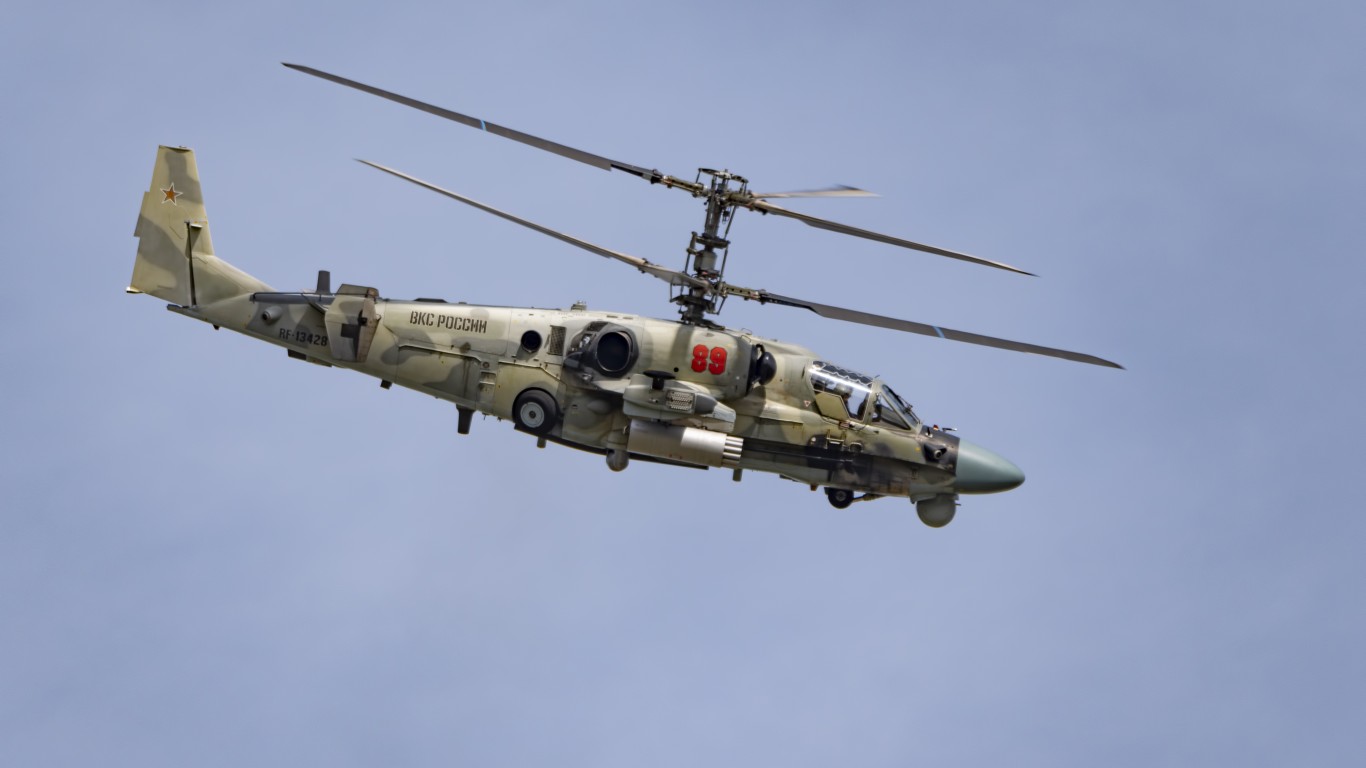
- Type: Attack / reconnaissance helicopter
- Year introduced: 2010
- Active aircraft: 140
- Top speed: 186 mph
- Armament: 30mm automatic cannon, air-to-surface anti-tank missiles, rocket pods, cannon pods
The Ka-52 Alligator is one of the newest combat helicopters to come out of Russia. Introduced in 2010, these are state-of-the-art attack helicopters designed for close-air support and anti-tank operations. These come standard with a 30mm automatic cannon, and can be equipped with air-to-surface anti-tank missiles, rocket pods, and cannon pods. The coaxial design for the main rotor is truly unique and actually eliminates the need for a tail rotor.
Mil Mi-2 Hoplite
- Type: Light utility helicopter
- Year introduced: 1965
- Active aircraft: 4
- Top speed: 124 mph
- Armament: 23mm automatic cannons, rocket pods, anti-tank guided missiles, air-to-air missiles
The Mil Mi-2 Hoplite is one of the older helicopters currently in service of Russia’s military with only 4 active aircraft. These helicopters were introduced in 1965 and can equip a wide array of armament including 23mm automatic cannons (standard), rocket pods, anti-tank guided missiles, and air-to-air missiles.
Mil Mi-24/35 Hind
- Type: Attack helicopter
- Year introduced: 1973
- Active aircraft: 325
- Top speed: 208 mph
- Armament: 12.7mm heavy machine guns, 23mm cannon, 30mm cannon, anti-tank missiles, rocket pods, machine gun pods, cannon pods, conventional drop bombs
The Mi-24 earned the nickname the “flying tank” as a result of its heavy armor and incredible firepower. These helicopters have a top speed around 208 mph and can equip 12.7mm heavy machine guns, 23mm and 30mm cannons, anti-tank missiles, rocket pods, and conventional drop bombs. With 325 active aircraft, the Mi-24/35 is the backbone of Russia’s attack helicopter force.
Mil Mi-26 Halo
- Type: Heavy-lift transport helicopter
- Year introduced: 1983
- Active aircraft: 44
- Top speed: 183 mph
- Armament: Light machine guns, air-to-ground missiles, air-to-air missiles, rocket pods
The Mi-26 Halo is typically a heavy-lift transport helicopter, but it can equip a wide range of armament for combat scenarios. It was introduced in 1983, and there are currently 44 in active service of the Russian military. This helicopter actually holds the world record for the heaviest helicopter lift, having transported a 56-ton piece of machinery.
Mil Mi-28 Havoc
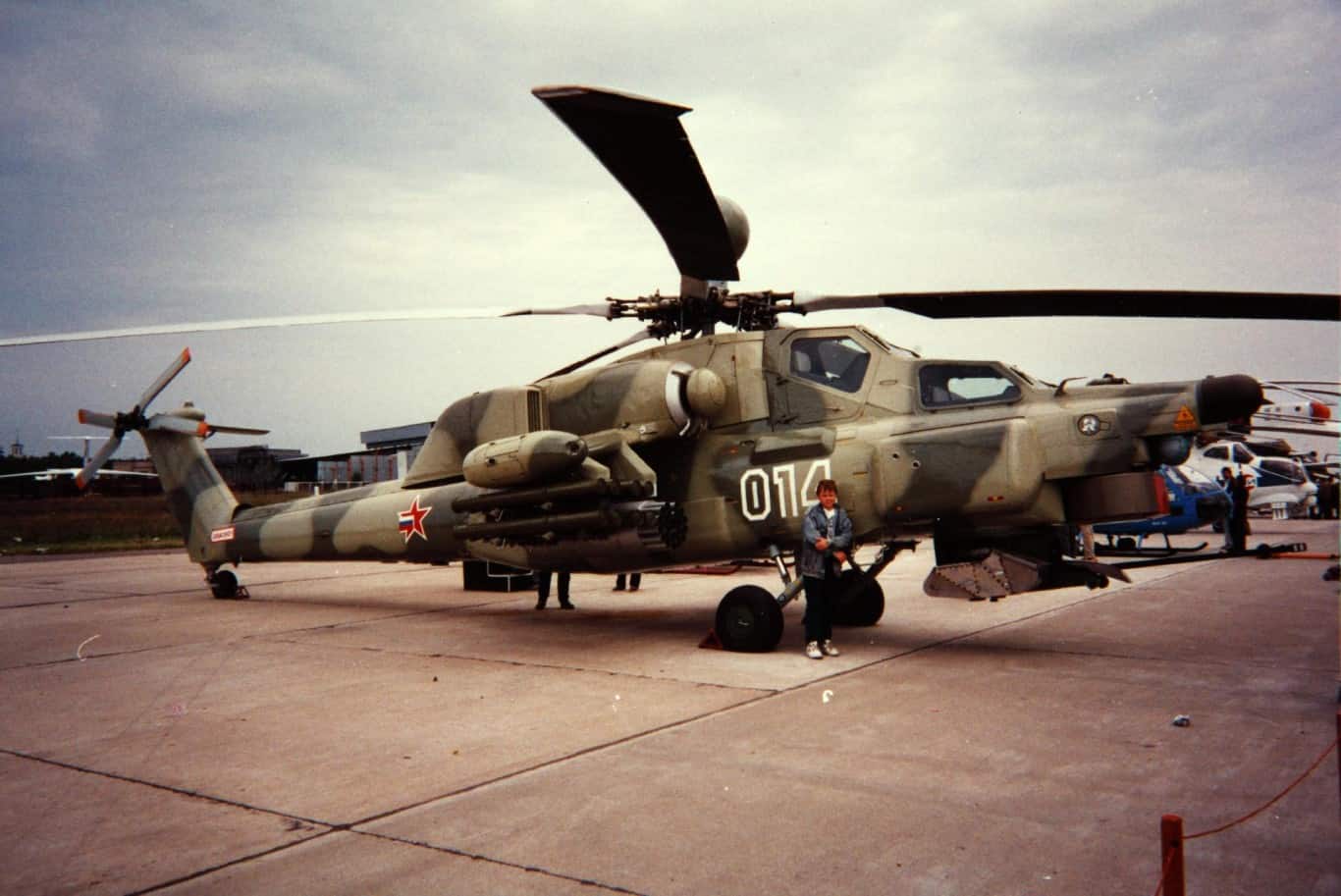
- Type: Twin-engine attack helicopter
- Year introduced: 2009
- Active aircraft: 94
- Top speed: 199 mph
- Armament: 30mm Shipunov 2A42 cannon, rocket pods, Spiral missiles, gun pods, cannon pods
The Mil Mi-28 Havoc is a twin-engine attack helicopter designed for precision strikes on armored targets and close air support for ground troops. One interesting fact about this helicopter that sets it apart from most others is that it can perform advanced maneuvers, like loops and rolls, which are rare for attack helicopters. This coupled with its firepower gives the Havoc a serious edge in almost any engagement.
Mil Mi-38
- Type: Medium-lift twin-engine transport helicopter
- Year introduced: 2019
- Active aircraft: 2
- Top speed: 186 mph
- Armament: Light machine guns, rocket pods
The Mil Mi-38, introduced in 2019, is a medium-lift twin-engine transport helicopter designed for a variety of missions, including cargo transport, troop movement, and medical evacuation. It can equip some small armament, but it is typically used for non-combat roles.
Mi-8/17/171 Hip-H

- Type: Medium-lift transport helicopter
- Year introduced: 1981
- Active aircraft: 792
- Top speed: 158 mph
- Armament: Shturm missiles, rocket pods, 23mm cannon pods, 7.62mm machine guns
The Mi-8 series is the most-produced helicopter in the world since its introduction in the 1960s. Its later iterations in the Mi-17 and Mi-171 build on the base design but obviously with upgraded avionics, coming about in the 1980s. These helicopters can equip Shturm missiles, rocket pods, 23mm cannon pods, and 7.62mm machine guns.
MiG-29/35 Fulcrum
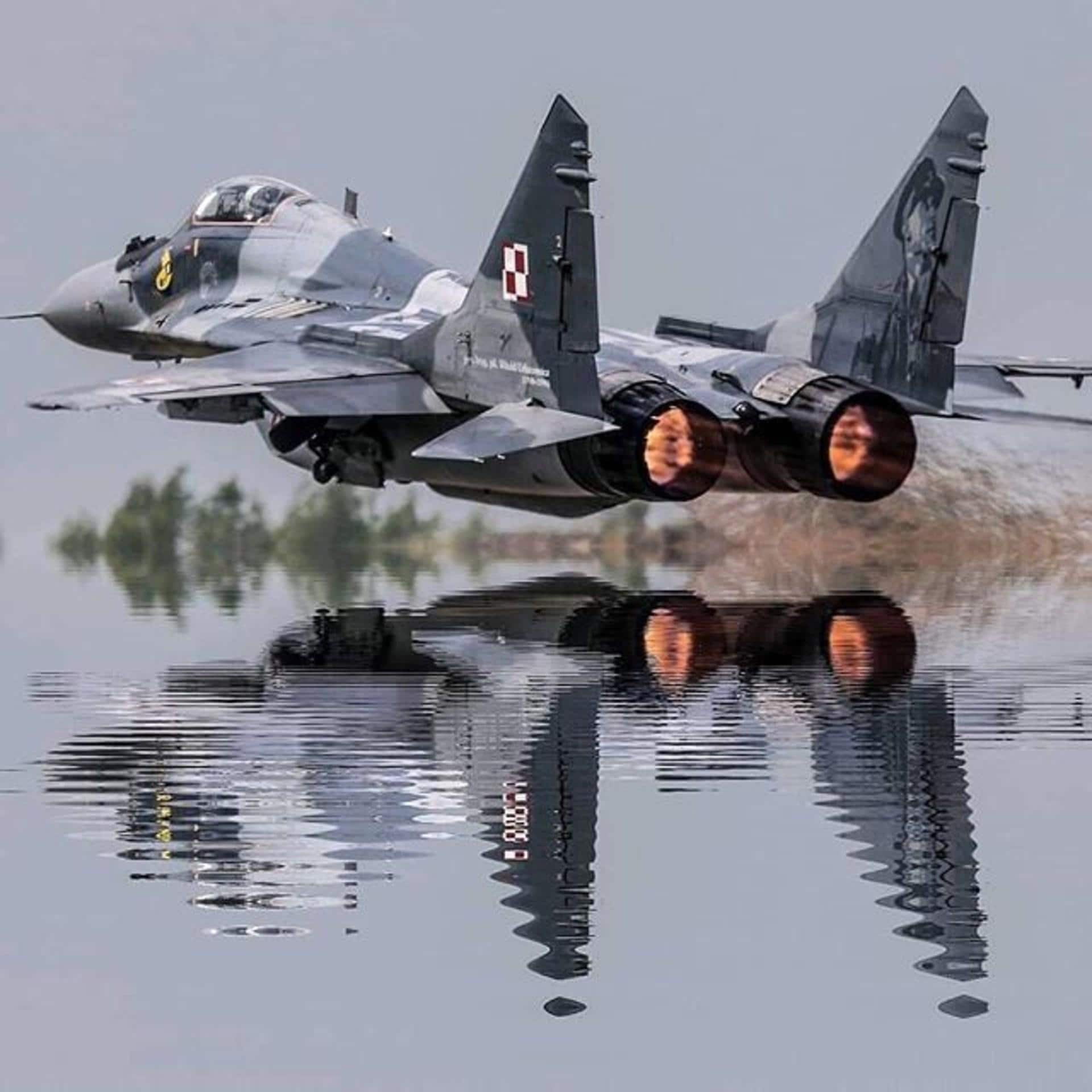
- Type: Lightweight multirole fighter aircraft
- Year introduced: 1984
- Active aircraft: 258
- Top speed: 1,519 mph
- Armament: 30mm GSh-1 internal automatic cannon, Alamo missiles, Adder missiles, rocket pods, conventional drop bombs, guided bombs
The MiG-29/35 Fulcrum makes up the backbone of Russia’s fleet of fighter jets. Introduced in 1984, these jets can hit speeds up to 1,519 mph. They come equipped with a 30mm GSh-1 internal automatic cannon standard, as well as Alamo and Adder missiles, rocket pods, and both conventional and guided bombs. The MiG-35 variant includes advanced avionics, improved radar systems, and can perform multi-role missions like ground strikes and interception.
MiG-31 Foxhound
- Type: Interceptor aircraft
- Year introduced: 1979
- Active aircraft: 128
- Top speed: 1,864 mph
- Armament: 23mm GSh-6 internal cannon, Amos missiles, Aphid missiles, Acrid missiles
The MiG-31 Foxhound is one of the fastest fighter jets in the world. These jets can hit speeds up to Mach 2.8, or roughly 1,860 mph. Its incredible speed marks it primarily as an interceptor. These jets are designed to defend against enemy bombers or even cruise missiles at long range. The Foxhound can also reach altitudes that most other aircraft can’t, further extending its defensive capabilities.
In terms of its operational history, the Foxhound has been primarily deployed in Artic patrols and border defense missions. However, these jets were used in Syria where they provided air cover for Russian operations.
Su-24 Fencer
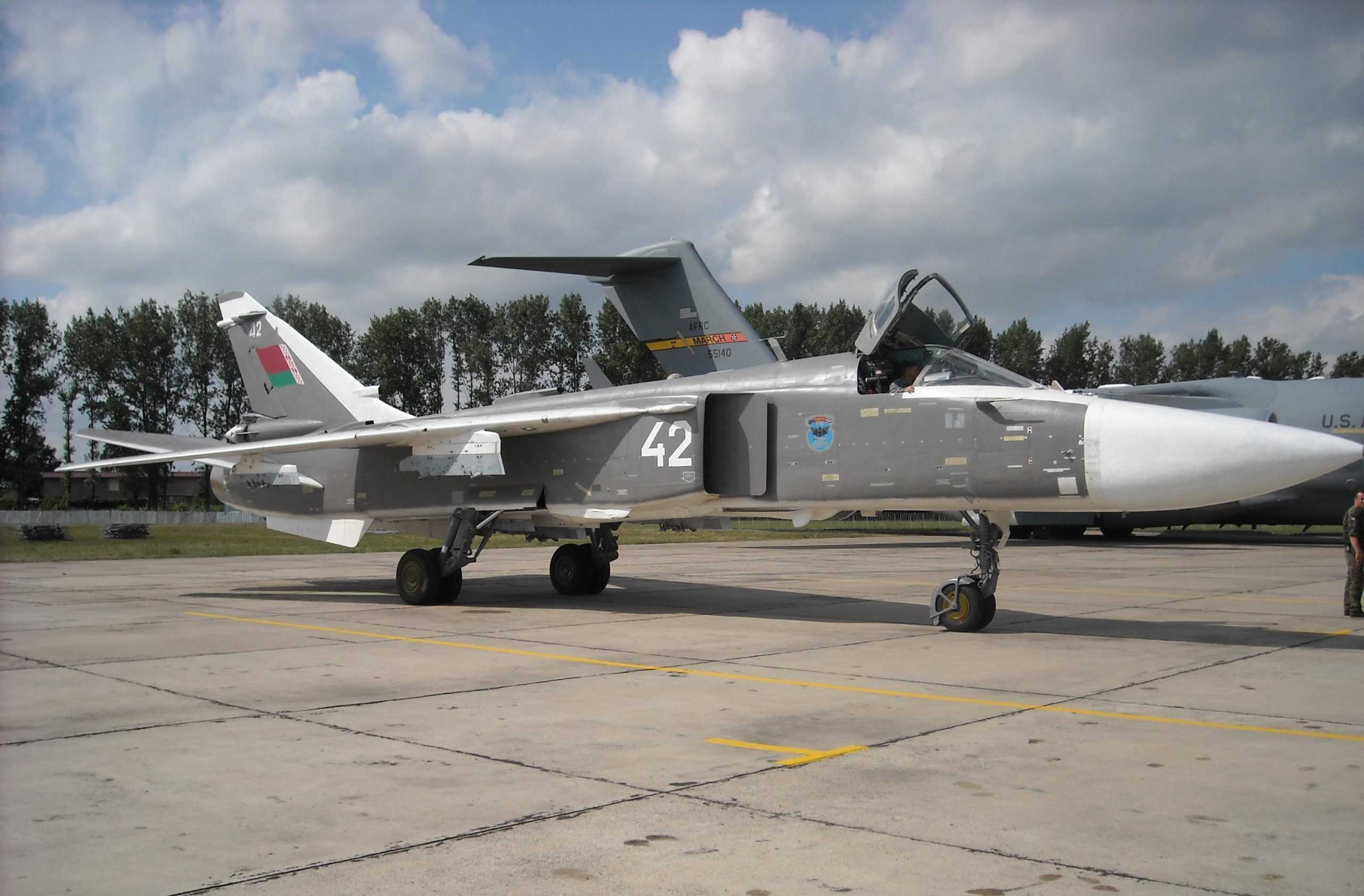
- Type: Long-range strike / attack aircraft
- Year introduced: 1974
- Active aircraft: 300
- Top speed: 1,439 mph
- Armament: 23mm GSh internal six-barrel cannon, Aphid missiles, Archer missiles, Kingbolt missiles, Krypton missiles, rocket pods, conventional drop bombs, guided bombs
The Su-24 Fencer was one of the first Soviet aircraft that came with an all-weather radar and terrain-following capabilities, allowing it to fly at low altitudes to evade enemy defenses. It was introduced in 1974 as a long-range strike aircraft, but it can perform a variety of other roles.
Su-25 Grach Frogfoot
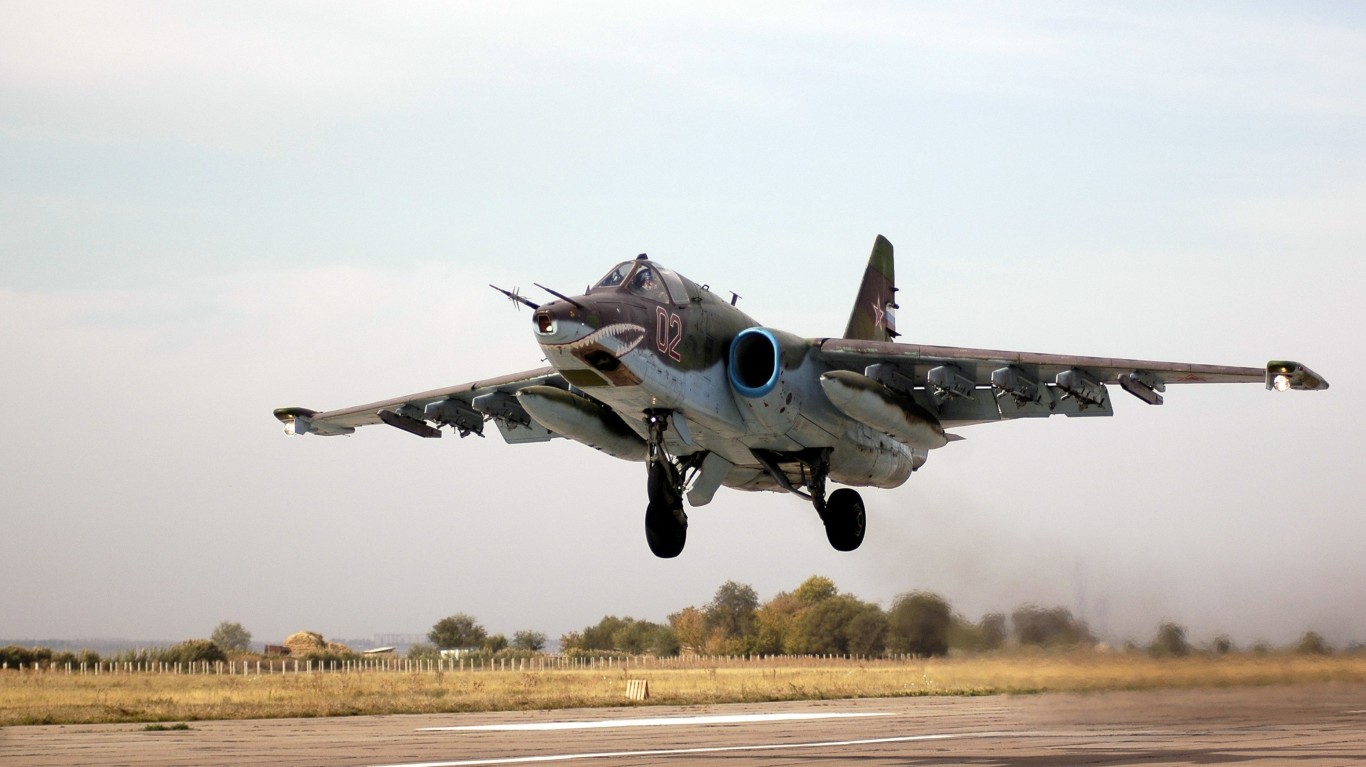
- Type: Close-air support / ground attack aircraft
- Year introduced: 1981
- Active aircraft: 176
- Top speed: 590 mph
- Armament: 30mm GSh- internal cannon, rocket pods, guided munitions, conventional drop bombs, air-to-surface missiles, air-to-air missiles
Recognized by the NATO reporting name “Frogfoot,” the Su-25 is a dedicated close-air support and ground attack aircraft. Although these jets have a relatively slow top speed of 590 mph, they can equip a wide array of armament including a 30mm GSh internal cannon, rocket pods, guided munitions, conventional bombs, air-to-surface missiles, and air-to-air missiles. There are currently 176 of these aircraft in active service.
Su-27 Flanker (Su-27/30/35)
- Type: Multi-role air superiority fighter
- Year introduced: 1985
- Active aircraft: 409
- Top speed: 1,553 mph
- Armament: 30mm GSh internal cannon, air-to-air missiles, air-to-surface missiles, conventional drop bombs, cluster bombs, anti-ship missiles, anti-radar missiles
Introduced in 1985, the Su-27 Flanker is an air-superiority fighter with a top speed over 1,550 mph. These come outfitted with a 30mm GSh internal cannon and a wide variety of munitions, including air-to-air missiles, air-to-surface missiles, conventional bombs, cluster bombs, anti-ship missiles, and anti-radar missiles. These jets were originally designed to counter the American F-15 Eagle, which has led to a long-standing rivalry between these two aircraft.
Su-34 Fullback
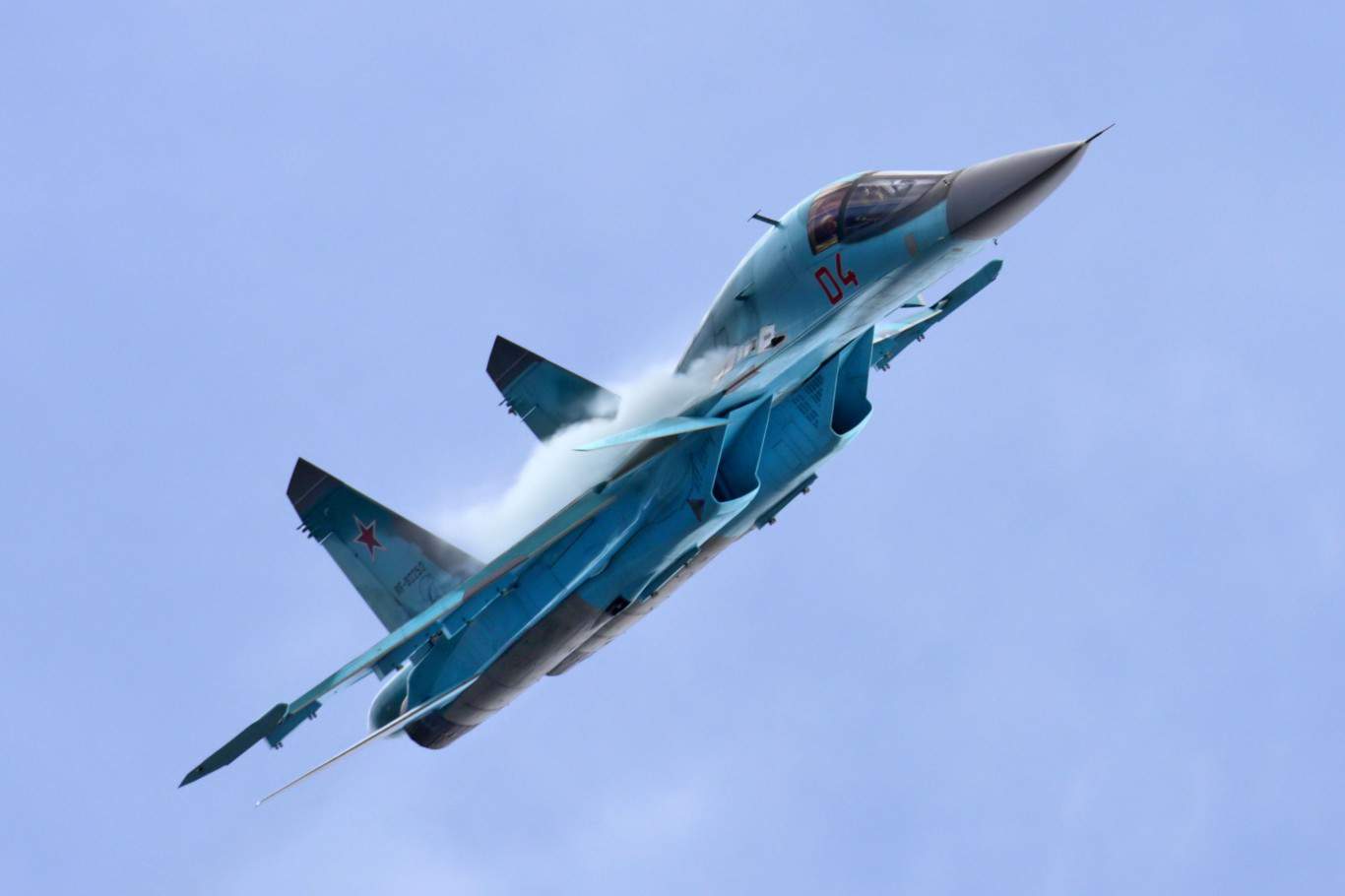
- Type: Strike fighter aircraft
- Year introduced: 2014
- Active aircraft: 134
- Top speed: 1,367 mph
- Armament: 30mm GSh internal cannon, Archer missiles, Moskit missiles, air-to-ground missiles, air-to-air missiles, guided munitions, rocket pods
Introduced in 2014, the Su-34 Fullback is one of the newest strike fighter aircraft to enter the Russian Air Force. There are 134 of these aircraft in service, and they can hit top speeds of nearly 1,400 mph.
Su-57 Felon
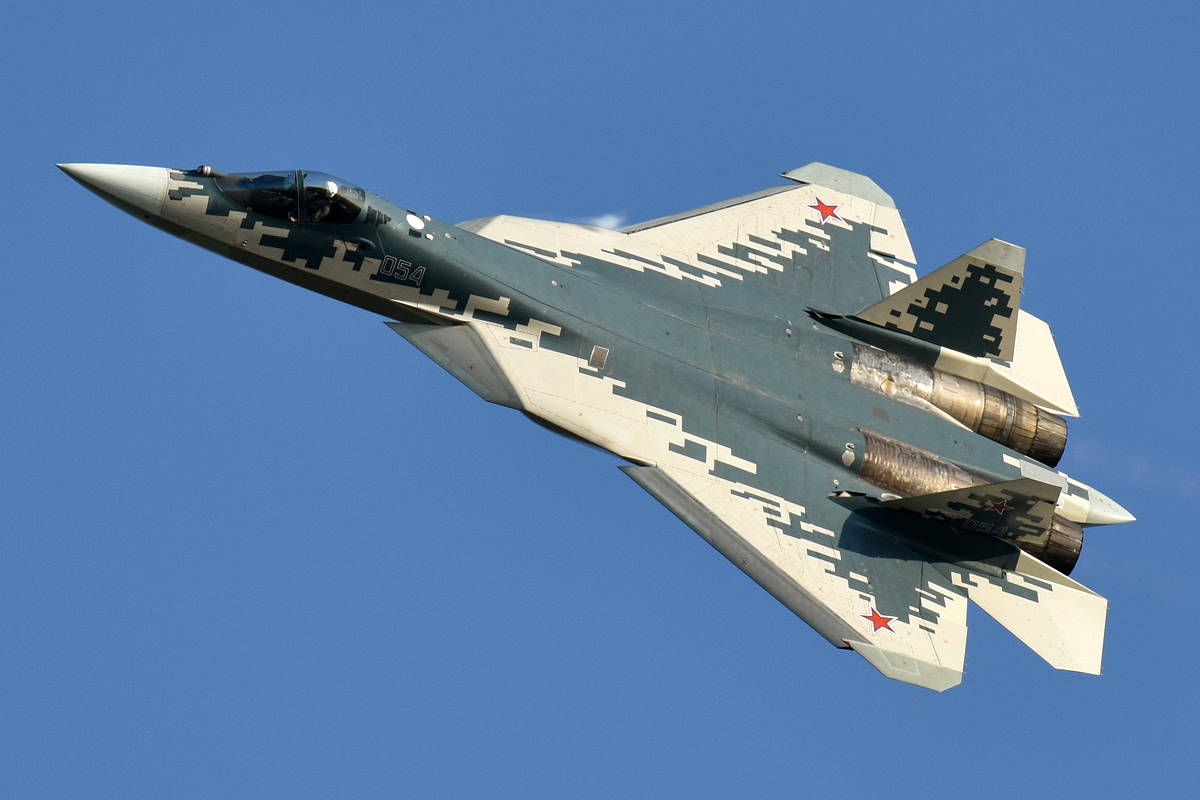
- Type: Multi-role stealth aircraft
- Year introduced: 2019
- Active aircraft: 14
- Top speed: 1,616 mph
- Armament: 30mm GSh internal cannon, air-to-air missiles, air-to-surface missiles, guided bombs
The Su-57 Felon is the newest iteration of Sukhoi fighter jets. These fifth-generation fighters feature advanced stealth technology and avionics. With a top speed of 1,616 mph, these jets are capable of supercruise, which allow them to fly at supersonic speeds without afterburners. There are only 14 of these aircraft in service now, but more are on the way.
In terms of the specs, the Felon is powered by two Saturn AL-41F1 afterburning turbofan engines that allow for a top speed of 1,616 mph (Mach 2). The aircraft features an internal weapons bay capable of carrying air-to-air missiles, air-to-ground precision-guided munitions, and anti-ship missiles, with a hefty payload capacity.
The Felon is meant to rival its American counterpart, the F-35 Lightning II. These aircraft measure up on a number of specs and features, but again there has been no overt competition or engagement between these two aircraft, so it is left to speculation at the moment.
Tu-160 Blackjack
- Type: Strategic heavy bomber aircraft
- Year introduced: 1989
- Active aircraft: 15
- Top speed: 1,243 mph
- Armament: Kent cruise missiles, Kickback nuclear missiles, conventional drop bombs, air-to-surface missiles
The Tu-160 Blackjack is recognized as the largest and heaviest combat aircraft ever built. With a top speed of 1,243 mph, the Tu-160 Blackjack is one of the fastest strategic heavy bombers on the planet. It’s heavy-duty payload reflects this. It was nicknamed the “White Swan” for its sleek, all-white appearance. These heavy bombers can launch cruise missiles, drop bombs, and even nuclear ordnance.
These strategic heavy bombers were originally designed during the Cold War, with four Samara NK-32 afterburning turbofan engines that each produce as much as 55,000 pounds of thrust with afterburners. The Blackjack also can carry over 99,000 pounds of ordnance in its internal bays.
Tu-22M Backfire
- Type: Strategic maritime bomber
- Year introduced: 1972
- Active aircraft: 58
- Top speed: 1,243 mph
- Armament: 23mm GSh tail-mounted cannon, air-to-surface missiles, anti-ship missiles, conventional drop bombs, laser-guided bombs, cruise missiles
Introduced in 1972, the Tu-22M Backfire is a strategic maritime bomber designed for long-range strike missions against naval and land-based targets. There are currently 58 of these aircraft in active service.
Tu-95 Bear
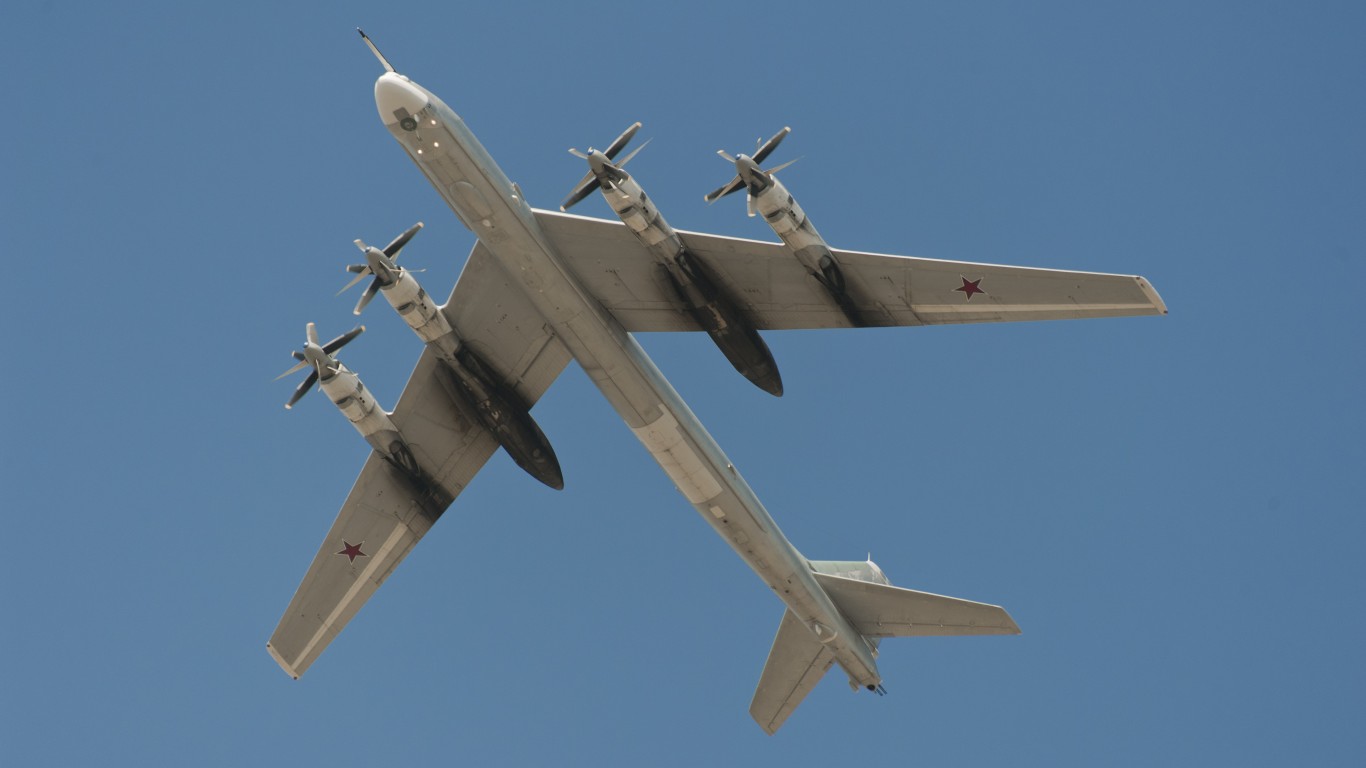
- Type: Strategic reconnaissance / heavy bomber aircraft
- Year introduced: 1956
- Active aircraft: 47
- Top speed: 531 mph
- Armament: 23mm cannons, air-to-air missiles, air-to-surface missiles, anti-ship missiles, precision guided munitions, conventional drop bombs, nuclear bombs
The Tu-95 Bear was introduced in 1956, and it would go on to influence the Tu-142 Bear. It was introduced in 1956 and is one of the longest serving aircraft in the Russian military with 47 currently in service.
These heavy bombers were originally designed during the Cold War, where the Bear was designed to deliver nuclear strikes, if needed. The Tu-95 was even famous for dropping the Tsar Bomba, the most powerful nuclear weapon ever detonated.
Over the decades, these aircraft have undergone multiple upgrades, particularly in avionics and missile systems, allowing the Tu-95 series to stay relevant in modern warfare despite its 1950s origin.
Take Charge of Your Retirement In Just A Few Minutes (Sponsor)
Retirement planning doesn’t have to feel overwhelming. The key is finding expert guidance—and SmartAsset’s simple quiz makes it easier than ever for you to connect with a vetted financial advisor.
Here’s how it works:
- Answer a Few Simple Questions. Tell us a bit about your goals and preferences—it only takes a few minutes!
- Get Matched with Vetted Advisors Our smart tool matches you with up to three pre-screened, vetted advisors who serve your area and are held to a fiduciary standard to act in your best interests. Click here to begin
- Choose Your Fit Review their profiles, schedule an introductory call (or meet in person), and select the advisor who feel is right for you.
Why wait? Start building the retirement you’ve always dreamed of. Click here to get started today!
Thank you for reading! Have some feedback for us?
Contact the 24/7 Wall St. editorial team.
